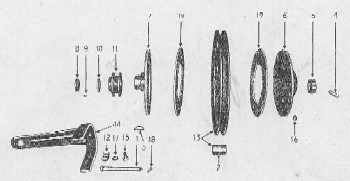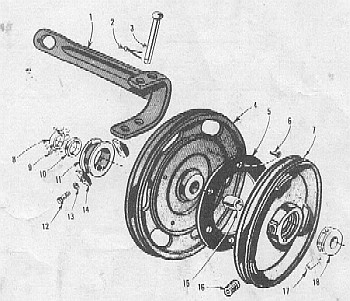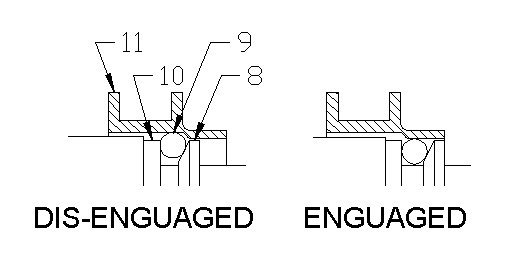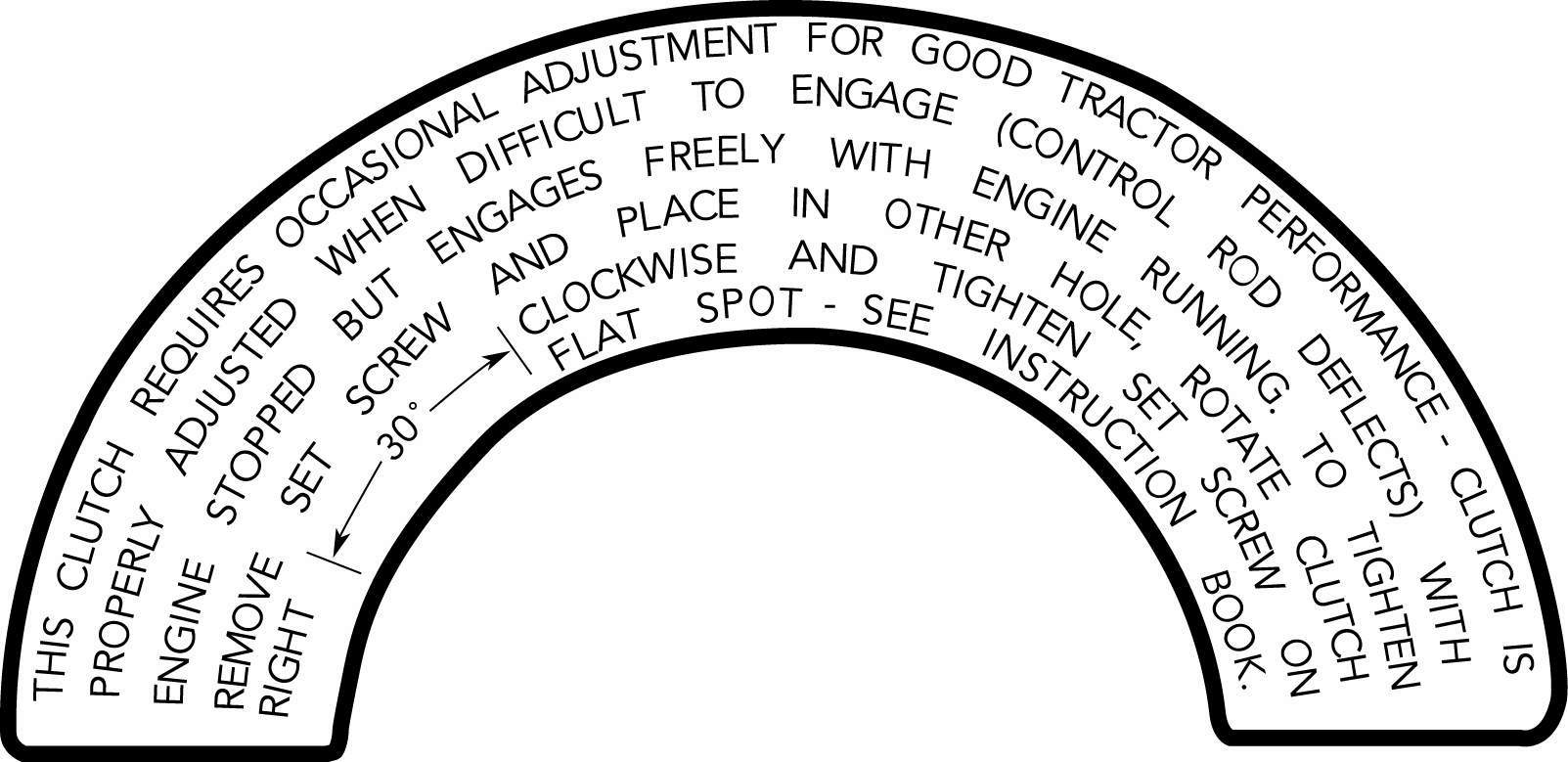
Models 917.57560's and later have what they call a rolling ball lock clutch. There are no springs involved except for the one on the end of the control rod on some models, which is more for adjusting the position of the handle, than the engagement of the clutch. There are two variations of the ball lock clutch.

The double disk clutch was used on models up to 917.57597. It has the same transmission pulley and facings used in the earlier spring clutch. It floats between a movable inner disk and an adjustable outer disk.

The single disk clutch was used on models 917.57597 and after. The transmission pulley casting changed, and has the facing riveted to the outside of it. The clutch disk is also the reverse pulley, which became standard on these models, regardless of whether complete reverse was offered.

The improved clutch enguagement utilizes an ingenious design of a beveled thrust washer (8), ten or eleven ball bearings (9), flat thrust washer (10) and a sliding collar (11). The collar�s bore has a beveled lip that steps a larger inner diameter to a smaller diameter. The collar in the disengaged position holds the balls loosely between the two washers under its larger ID. When engaged, the collar�s smaller ID is moved over the balls, forcing them downward against the fixed beveled washer, which displaces the flat washer outward moving the inner clutch disk (or drive pulley on later models) a mear .030".

Typically the only adjustment required involves the outer clutch disk or reverse pulley as the case may be. They are threaded onto a hub and locked into place with a set screw. The hub is fastened to the shaft with a grooved pin and has 6 flats to receive the set screw. To adjust the clutch you simply back out the set screw, turn the disk to align it with the next flat and tighten. You�ll notice that when one set screw hole is aligned with a flat there is a second one halfway between two other flats. If you find that the first set screw hole leaves the clutch either too tight or too loose you can use the second one to split the difference.
Of course this is easier said than done when the tractor has set out and rusted or someone has tightened the set screw onto the threads.